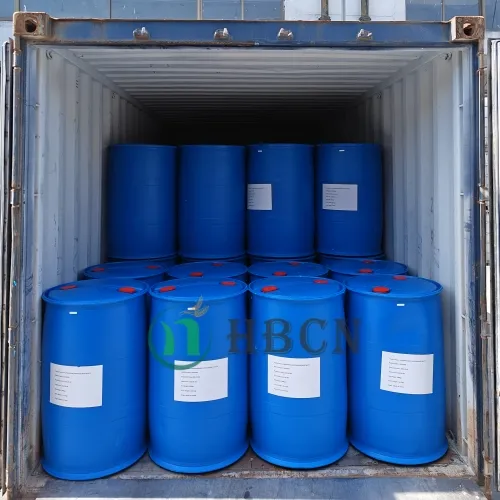
Jul . 20, 2024 11:53 Back to list
Chemical Inactivation of Mesotrione and Its Effects on Agricultural Pesticide Efficacy and Safety
The Chemical Inactivation of Mesotrione An Overview
Mesotrione is a selective herbicide utilized predominantly for the control of broadleaf weeds and certain grasses in various crops, including corn and turf. Its effectiveness is primarily due to its mode of action, which inhibits the enzyme 4-hydroxyphenylpyruvate dioxygenase (HPPD), a critical component in the synthesis of carotenoids. This disruption ultimately leads to the death of the target plants by preventing them from photosynthesizing effectively. However, as with many agrochemicals, the environmental implications and the necessity for effective management practices have spurred interest in the chemical inactivation of mesotrione to mitigate potential negative impacts.
Chemical inactivation refers to the processes by which herbicides are chemically transformed into non-toxic or less toxic forms, often through various degradation pathways. For mesotrione, the main degradation products include its hydrolytic products, as well as those formed through microbial metabolism. These processes can occur naturally in the environment, influenced by factors such as pH, temperature, and the presence of microbial activity in soil and water.
One of the most significant pathways for the degradation of mesotrione is hydrolysis, which is particularly effective in alkaline conditions. Studies have shown that mesotrione undergoes hydrolysis when exposed to water, leading to the formation of less active metabolites, such as mesotrione acid. The rate of this reaction is highly dependent on the pH level; under alkaline conditions (pH above 7), the half-life of mesotrione can be significantly reduced, which enhances its degradation and diminishes its herbicidal effectiveness. This characteristic can be beneficial for agricultural practices where off-target effects need to be minimized.
chemical inactivation mesotrione product

Microbial degradation also plays a crucial role in the chemical inactivation of mesotrione. Various soil microorganisms have been identified that possess the capability to metabolize mesotrione and convert it into non-toxic end products. The efficiency of these microbial processes can be influenced by several factors, including soil composition, moisture content, and temperature. In soils enriched with organic matter and microorganisms, the degradation rate of mesotrione can be accelerated, leading to decreased herbicide persistence in the environment.
Furthermore, researching the application of chemical amendments can enhance the degradation of mesotrione. For instance, the addition of organic materials or biodegradable polymers can potentially foster microbial activities that contribute to the breakdown of the herbicide. This approach not only enhances the inactivation of mesotrione but also supports soil health and biodiversity, promoting a more sustainable agricultural practice.
While the chemical inactivation of mesotrione presents opportunities for reducing its environmental footprint, it also highlights the need for careful management. Farmers and agricultural practitioners must consider soil conditions, microbial activity, and weather patterns when applying mesotrione to ensure that its use aligns with both yield optimization and environmental stewardship. Additionally, the development of integrated weed management strategies that incorporate chemical inactivation along with cultural and biological methods can lead to more sustainable solutions for weed control.
In conclusion, chemical inactivation of mesotrione is a critical area of study that can help mitigate the environmental impacts of this widely used herbicide. By understanding the various degradation pathways and factors influencing these processes, stakeholders in agriculture can make informed decisions that not only enhance crop production but also contribute to the sustainability of agricultural ecosystems. Ongoing research in this field will be essential for optimizing herbicide use while safeguarding environmental health.
-
Kasugamycin Fungicide: Efficient Bacterial & Fungal Control
NewsAug.02,2025
-
Emamectin Benzoate: AI-Optimized Pest Control Solution
NewsAug.01,2025
-
Best Abamectin 95% | Top Pesticide for Crop Protection
NewsJul.31,2025
-
Insecticide Spirotetramat 11% + Thiacloprid 11% SC at Good Price
NewsJul.30,2025
-
Best Abamectin SDS - Premium Quality & Reliable Safety Data
NewsJul.29,2025
-
Agrochemicals Pesticides Solutions for Sustainable Farming
NewsJul.29,2025
